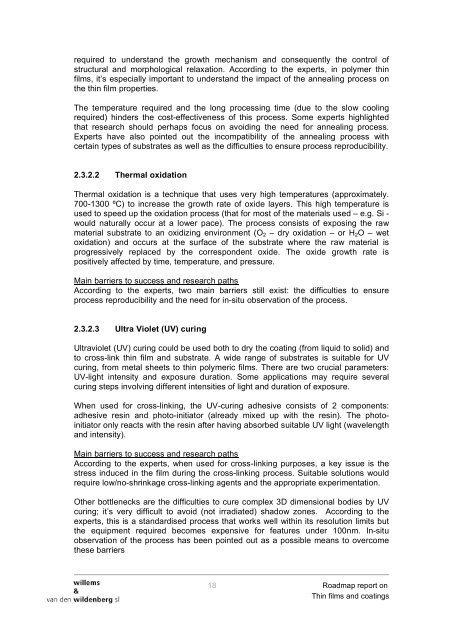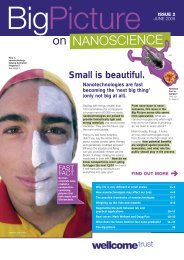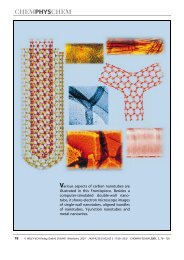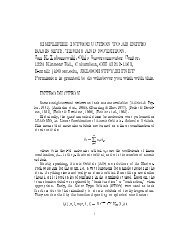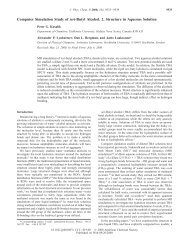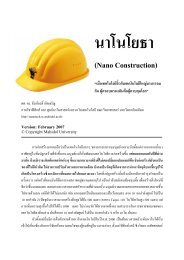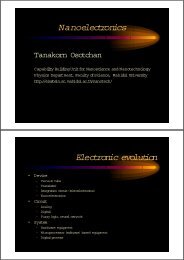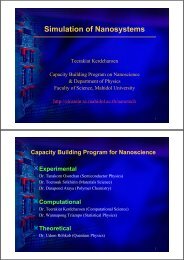'Thin films & coatings' Roadmap - Nano Mahidol
'Thin films & coatings' Roadmap - Nano Mahidol
'Thin films & coatings' Roadmap - Nano Mahidol
You also want an ePaper? Increase the reach of your titles
YUMPU automatically turns print PDFs into web optimized ePapers that Google loves.
equired to understand the growth mechanism and consequently the control of<br />
structural and morphological relaxation. According to the experts, in polymer thin<br />
<strong>films</strong>, it’s especially important to understand the impact of the annealing process on<br />
the thin film properties.<br />
The temperature required and the long processing time (due to the slow cooling<br />
required) hinders the cost-effectiveness of this process. Some experts highlighted<br />
that research should perhaps focus on avoiding the need for annealing process.<br />
Experts have also pointed out the incompatibility of the annealing process with<br />
certain types of substrates as well as the difficulties to ensure process reproducibility.<br />
2.3.2.2 Thermal oxidation<br />
Thermal oxidation is a technique that uses very high temperatures (approximately.<br />
700-1300 ºC) to increase the growth rate of oxide layers. This high temperature is<br />
used to speed up the oxidation process (that for most of the materials used – e.g. Si -<br />
would naturally occur at a lower pace). The process consists of exposing the raw<br />
material substrate to an oxidizing environment (O 2 – dry oxidation – or H 2 O – wet<br />
oxidation) and occurs at the surface of the substrate where the raw material is<br />
progressively replaced by the correspondent oxide. The oxide growth rate is<br />
positively affected by time, temperature, and pressure.<br />
Main barriers to success and research paths<br />
According to the experts, two main barriers still exist: the difficulties to ensure<br />
process reproducibility and the need for in-situ observation of the process.<br />
2.3.2.3 Ultra Violet (UV) curing<br />
Ultraviolet (UV) curing could be used both to dry the coating (from liquid to solid) and<br />
to cross-link thin film and substrate. A wide range of substrates is suitable for UV<br />
curing, from metal sheets to thin polymeric <strong>films</strong>. There are two crucial parameters:<br />
UV-light intensity and exposure duration. Some applications may require several<br />
curing steps involving different intensities of light and duration of exposure.<br />
When used for cross-linking, the UV-curing adhesive consists of 2 components:<br />
adhesive resin and photo-initiator (already mixed up with the resin). The photoinitiator<br />
only reacts with the resin after having absorbed suitable UV light (wavelength<br />
and intensity).<br />
Main barriers to success and research paths<br />
According to the experts, when used for cross-linking purposes, a key issue is the<br />
stress induced in the film during the cross-linking process. Suitable solutions would<br />
require low/no-shrinkage cross-linking agents and the appropriate experimentation.<br />
Other bottlenecks are the difficulties to cure complex 3D dimensional bodies by UV<br />
curing; it’s very difficult to avoid (not irradiated) shadow zones. According to the<br />
experts, this is a standardised process that works well within its resolution limits but<br />
the equipment required becomes expensive for features under 100nm. In-situ<br />
observation of the process has been pointed out as a possible means to overcome<br />
these barriers<br />
18 <strong>Roadmap</strong> report on<br />
Thin <strong>films</strong> and coatings


